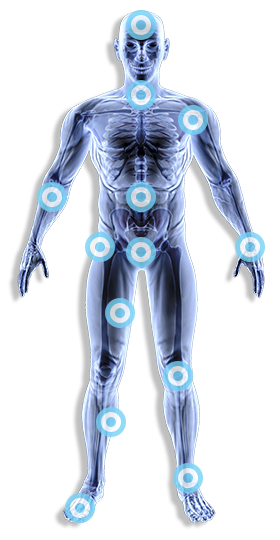Acupuncture is the use of a variety of physical techniques to stimulate the body’s own healing potential. It is a part of Traditional Chinese Medicine (TCM), a system that includes herbal medicine, therapeutic massage, and exercise (tai chi, qi gong, etc).
It uses a framework of natural metaphors and the concept of Qi (“chee”, the various expressions of energy in nature) to understand, diagnose and treat the individual. Its concepts of anatomy and physiology differ from those of Western biomedicine, and cannot be simply translated. In this system, one’s physical body, psychological state and spirit are viewed as an interrelated whole.
From the acupuncturist’s perspective, acupuncture manipulates Qi. The body’s Qi flows through channels or “meridians”, is accessible at holes or “points”, and is manipulated by needling, warming, etc, in order to help eliminate pathogenic influences and restore the harmonious functioning of the body. Even “novice” patients often find that they become increasingly aware of their Qi and acupoints as treatment progresses.
From a biomedical perspective, there are several mechanisms involved in the body’s response to acupuncture. Increasingly sophisticated analytical methods and imaging techniques offer new windows on the complex nature of the “acupuncture response”. The net effect of a given treatment depends on the combination of points chosen and the type of stimulation used – in essence, the “blend” of the different biophysical responses that can be elicited by acupuncture.
Acupuncture modes of action
Neuropeptide Release
It is apparent that a variety of chemical messengers including various endorphins, enkephalin and dynorphin are released in response to acupuncture. These compounds mediate pain, and influence a variety of physiological and psychological functions.
Acupuncture’s ability to stimulate their release, though not yet completely understood, explains some of its analgesic effects.
(Note: despite its sensational media appeal, the surgical applications of acupuncture alone are limited. Currently in China, acupuncture is often combined with chemical anesthetics or analgesics. This improves pain relief and limits nausea while drastically reducing the level of chemical agents and their side effects.)
Balancing the neurological “arc” between spinal nerves and their associated agonist/antagonist muscle groups
Stimulating of the acupoints over specific dorsal rami (branches of spinal nerve segments) while simultaneously stimulating the acupoints and muscle motor points along the distribution of the nerve’s associated myotome resets the balance between agonist and antagonist muscle groups.
This process can eliminate pain and weaknesses, and correct the resulting mechanical and postural imbalances caused by the stresses of overuse and trauma.
Trigger Point Deactivation
There is significant overlap of trigger points and classical acupoints. Precise local stimulation of these areas of “motor end plate pathology” (i.e. trigger points) results in deactivation and subsequent disruption of sensory and visceral effects.
Some of acupuncture’s analgesic and regulatory effects can be understood in these terms, though the mechanism of how trigger points function is not entirely clear either. It is likely that highly localised needle damage to cells results in release of anti-inflammatory and muscle-relaxing compounds.
This in turn allows muscle fibers to return to normal length and tone, promotes local blood flow and normalises central nervous system activity. Symptoms such as referred pain, muscle inhibition, etc. are thereby stopped.
Thalamic/Hypothalamic/Pituitary Axis and Adrenal Involvement
Various assays show that acupuncture can change neuro-hormonal and subcortical CNS activity. Levels of serotonin, sex hormones, corticosteroids, ADH, gut tension, motility and enzymes, bile secretion, blood counts and coagulation, vasoconstriction and dilation, lymphatic vessel tone, capillary permeability, etc, can be altered by acupuncture.
Recent studies employing PET and f-MRI scans also reveal changes in brain activity in response to acupuncture. The “acupuncture response” involves the linking of stimulating specific acupoints with the sensory map of the body of the cerebral cortex. This process, mediated by the amygdala and hypothalamus, influences bodily and emotional functions.
Researchers are coming to view acupuncture as a valuable window through which the complex interplay of nerves, the immune and endorphin systems and emotions can be examined.
Interaction With Bioelectric Fields
Acupoints are often areas with unusual bioelectric characteristics. Even without external electrical stimulation, acupuncture needles interact with electric fields or gradients within the body. The significance of these fields is still not well understood, but they change in response to acupuncture, altering neurological and healing responses.

